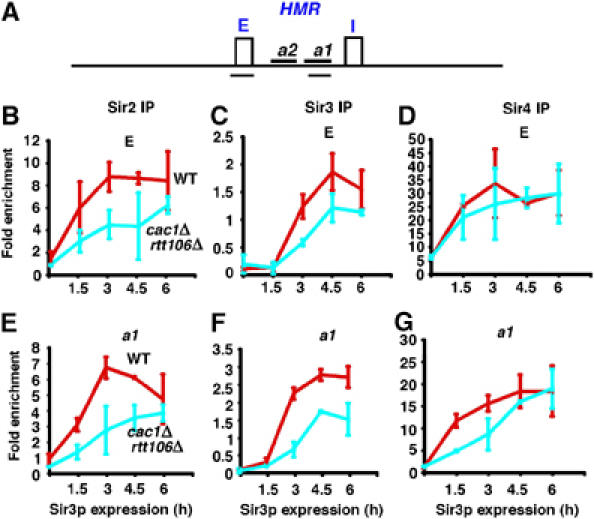Figure 6.

CAF-1 and Rtt106p are required for the spreading of Sir proteins during heterochromatin formation. (A) A schematic representation of the HMR locus. Two silencers, HMR-E (E) and HMR-I (I), and two genes, a2 and a1, as well as the locations of the two PCR primer sets (black underlines) used to amplify the HMR-E silencer and a fragment of the a1 gene are shown. (B–D) The binding of Sir2p (B) and Sir3p-HA (C) to the HMR-E silencer is reduced in cac1Δ rtt106Δ double mutant cells during the formation of silent chromatin as compared with wild-type cells, whereas Sir4p binding (D) to this site is not affected. (E–G) At the distal a1 gene, all three Sir proteins exhibit a delayed association with this site in the cac1Δ rtt106Δ double mutant cells following expression of Sir3p-HA. ChIP assays were performed using antibodies against Sir2p, Sir3p, or Sir4p following release of cells from an HU block and induction of Sir3p-HA expression for the indicated amounts of time. The immunoprecipitated DNA was analyzed using primers as depicted in (A) and PCR products were quantified as described in Supplementary data.
